Several new titles at the OISE Library deal with topics related to literature, literacy, and discourse! These range from strategies for introducing poetry to young children and building writing skills in elementary learners to interrogating specific discourses in Canada and questioning the place of literacy research in educational policy development.
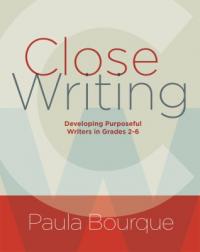 Paula Bourque, K-8 literacy coach and president of the Maine Literacy Council, uses her own experiences working with young writers in the classroom to illustrate the principles outlined in her new book, Close Writing: Developing Purposeful Writers in Grades 2-6. Part 1: Guiding Principles introduces readers to Bourque’s body of experience and builds a bridge between close reading and close writing through research on literacy development and the concept of “authorial reading”. Part 2: Close Writing Lessons comprises the bulk of the book and includes several chapters structured around the writing process, including pre-writing strategies, such as “Close Listening: Developing Our Writer’s Ear” and “Close Looking: Learning from Mentor Texts”; editing strategies, such as “Revising: Revisiting and Revisioning” and “Eyes and Ears of an Editor”; and chapters on assessment and feedback regarding a young writer’s written end product. Part 3: Close Writing with Authors includes a series of short interviews conducted by the author with different writers regarding their own close writing processes, which might be used in the classroom in conjunction with Chapter 5, “Close Modeling: Learning from Mentor Authors”. Each chapter is filled with classroom anecdotes in addition to specific activities and techniques for both elementary teachers and literacy specialists to try with their own budding writers.
Paula Bourque, K-8 literacy coach and president of the Maine Literacy Council, uses her own experiences working with young writers in the classroom to illustrate the principles outlined in her new book, Close Writing: Developing Purposeful Writers in Grades 2-6. Part 1: Guiding Principles introduces readers to Bourque’s body of experience and builds a bridge between close reading and close writing through research on literacy development and the concept of “authorial reading”. Part 2: Close Writing Lessons comprises the bulk of the book and includes several chapters structured around the writing process, including pre-writing strategies, such as “Close Listening: Developing Our Writer’s Ear” and “Close Looking: Learning from Mentor Texts”; editing strategies, such as “Revising: Revisiting and Revisioning” and “Eyes and Ears of an Editor”; and chapters on assessment and feedback regarding a young writer’s written end product. Part 3: Close Writing with Authors includes a series of short interviews conducted by the author with different writers regarding their own close writing processes, which might be used in the classroom in conjunction with Chapter 5, “Close Modeling: Learning from Mentor Authors”. Each chapter is filled with classroom anecdotes in addition to specific activities and techniques for both elementary teachers and literacy specialists to try with their own budding writers.
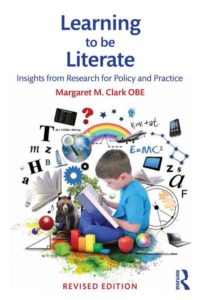 The new and revised edition of Learning to be Literate: Insights from Research for Policy and Practice, by Margaret M. Clark, OBE, summarizes a wealth of research by the author and others on literacy development from the 1960s through 2015. While the sections of the book which deal with educational policy are heavily skewed towards policy in the United Kingdom, Clark shows, through her own work and the research of others, the need for research-informed educational policy development, especially in literacy policy; furthermore, the essays on specific UK educational policies and their evolutions can inform research on educational policy elsewhere in relation to literacy development. Clark examines how changes in educational policy can affect literacy outcomes in learners, with essays like “Whose Knowledge Counts in Government Literacy Policies: At What Cost?” She also explores the ways in which definitions of literacy have evolved and the textual worlds in which young learners now develop literacy competency in essays such as “International Studies of Reading, such as PIRLS: A Cautionary Tale” and “Literacies in and for a Changing World: What is the Evidence?” The first edition of Learning to be Literate won the UK Literacy Association Academic Book Award in 2015, and this new and revised edition includes new material in chapters 14, 16, 17, and 18.
The new and revised edition of Learning to be Literate: Insights from Research for Policy and Practice, by Margaret M. Clark, OBE, summarizes a wealth of research by the author and others on literacy development from the 1960s through 2015. While the sections of the book which deal with educational policy are heavily skewed towards policy in the United Kingdom, Clark shows, through her own work and the research of others, the need for research-informed educational policy development, especially in literacy policy; furthermore, the essays on specific UK educational policies and their evolutions can inform research on educational policy elsewhere in relation to literacy development. Clark examines how changes in educational policy can affect literacy outcomes in learners, with essays like “Whose Knowledge Counts in Government Literacy Policies: At What Cost?” She also explores the ways in which definitions of literacy have evolved and the textual worlds in which young learners now develop literacy competency in essays such as “International Studies of Reading, such as PIRLS: A Cautionary Tale” and “Literacies in and for a Changing World: What is the Evidence?” The first edition of Learning to be Literate won the UK Literacy Association Academic Book Award in 2015, and this new and revised edition includes new material in chapters 14, 16, 17, and 18.
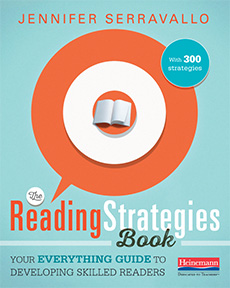 Building on her previous work in reading instruction (The Literacy Teacher’s Playbook, Teaching Reading in Small Groups, and Conferring with Readers), Jennifer Serravallo’s new title The Reading Strategies Book: Your Everything Guide to Developing Skilled Readers includes 300 different strategies for supporting reading instruction aimed at a variety of learner skill levels, ages, and instructional formats. Strategies are divided into categories based on the specific instructional goals they support; the 13 goals include “Supporting Pre-Emergent and Emergent Readers”, “Teaching Fluency: Reading with Phrasing, Intonation, and Automaticity”, and “Supporting Comprehension in Nonfiction: Getting the Most from Text Features”. The introduction to each new learning goal includes a summarized list of associated strategies and the reading levels, genres, and skills associated with each. Each individual strategy includes a description of the strategy itself, a “Lesson Language” section devoted to introducing the strategy in the classroom, and a series of prompts related to the strategy; strategy 5.27, ”Analyzing Historical Contexts” for the “Supporting Comprehension in Fiction: Understanding Plot and Setting” goal, includes prompts like “What do you know about this time and place?” and “What details do you know about the politics at this time?” Each strategy also lists the recommended Fountas & Pinnell reading levels for the strategy (5.27, for instance, lists levels R-Z+), genres or text types to use with the strategy, and skills associated with the strategy. Strategies are organized within each goal according to their recommended Fountas & Pinnell levels. Throughout the book, Serravallo also includes “Hat Tips”, suggestions for further readings regarding individual strategies. The strategies included in the final goal, “Improving Writing about Reading”, could also be used in conjunction with Paula Bourque’s Close Writing.
Building on her previous work in reading instruction (The Literacy Teacher’s Playbook, Teaching Reading in Small Groups, and Conferring with Readers), Jennifer Serravallo’s new title The Reading Strategies Book: Your Everything Guide to Developing Skilled Readers includes 300 different strategies for supporting reading instruction aimed at a variety of learner skill levels, ages, and instructional formats. Strategies are divided into categories based on the specific instructional goals they support; the 13 goals include “Supporting Pre-Emergent and Emergent Readers”, “Teaching Fluency: Reading with Phrasing, Intonation, and Automaticity”, and “Supporting Comprehension in Nonfiction: Getting the Most from Text Features”. The introduction to each new learning goal includes a summarized list of associated strategies and the reading levels, genres, and skills associated with each. Each individual strategy includes a description of the strategy itself, a “Lesson Language” section devoted to introducing the strategy in the classroom, and a series of prompts related to the strategy; strategy 5.27, ”Analyzing Historical Contexts” for the “Supporting Comprehension in Fiction: Understanding Plot and Setting” goal, includes prompts like “What do you know about this time and place?” and “What details do you know about the politics at this time?” Each strategy also lists the recommended Fountas & Pinnell reading levels for the strategy (5.27, for instance, lists levels R-Z+), genres or text types to use with the strategy, and skills associated with the strategy. Strategies are organized within each goal according to their recommended Fountas & Pinnell levels. Throughout the book, Serravallo also includes “Hat Tips”, suggestions for further readings regarding individual strategies. The strategies included in the final goal, “Improving Writing about Reading”, could also be used in conjunction with Paula Bourque’s Close Writing.
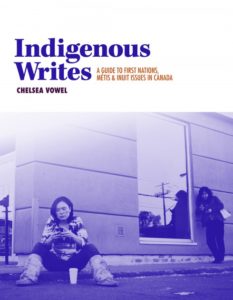 Chelsea Vowel’s Indigenous Writes: A Guide to First Nations, Métis & Inuit Issues in Canada is a collection of 31 short essays designed to be read conversationally and organized into 5 categories: “Terminology of Relationships”, “Culture and Identity”, “Myth-Busting”, “State Violence”, and “Land, Learning, Law, and Treaties”. The essays cover a broad range of issues while interrogating discourses, conceptions, and vocabularies around those issues, both directly – through essays like “Hunter-Gatherers or Trapper-Harvesters? Why Some Terms Matter” – and indirectly through Vowel’s purposefully conversational style. Essays which may be of interest regarding discourse and definition include “Icewine, Roquefort Cheese, and the Navajo Nation: Indigenous Use of Intellectual Property Laws”, “All My Queer Relations: Language, Culture, and Two-Spirit Identity”, and “Settling on a Name: Names for Non-Indigenous Canadians”. Each essay is followed by an extensive list of both citations and resources for further reading.
Chelsea Vowel’s Indigenous Writes: A Guide to First Nations, Métis & Inuit Issues in Canada is a collection of 31 short essays designed to be read conversationally and organized into 5 categories: “Terminology of Relationships”, “Culture and Identity”, “Myth-Busting”, “State Violence”, and “Land, Learning, Law, and Treaties”. The essays cover a broad range of issues while interrogating discourses, conceptions, and vocabularies around those issues, both directly – through essays like “Hunter-Gatherers or Trapper-Harvesters? Why Some Terms Matter” – and indirectly through Vowel’s purposefully conversational style. Essays which may be of interest regarding discourse and definition include “Icewine, Roquefort Cheese, and the Navajo Nation: Indigenous Use of Intellectual Property Laws”, “All My Queer Relations: Language, Culture, and Two-Spirit Identity”, and “Settling on a Name: Names for Non-Indigenous Canadians”. Each essay is followed by an extensive list of both citations and resources for further reading.
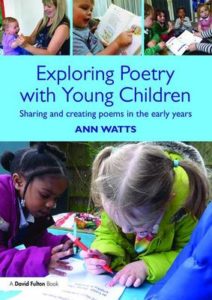 Exploring Poetry with Young Children: Sharing and Creating Poems in the Early Years, by Ann Watts, is written for both early childhood educators and educational practitioners as well as parents of a baby, toddler, or young child. Watts explores how poetry can be used with young children to develop phonic and rhythmic awareness, and explains the importance of developing poetic awareness at an early age. The book is divided into two parts; Part 1 includes “What is Poetry and Why Do We Need It?”; chapters on sharing poetry in various ways with babies, toddlers, and young children; a chapter on the ways in which poetry can be used to further a child’s literacy development; and a chapter on creating poetry with young children. This chapter includes activities and techniques—for instance, planned poetry making for special occasions—and a list of poetic forms that may be accessible for young learners, including haiku, acrostics, kennings, and shape poems. Part 2 includes a long anthology of poetry for young children written by the author and others and organized by topic; topics include “Garden Creatures”, “Pets”, and “Celebrations and Festivals”. This title is also available as an ebook.
Exploring Poetry with Young Children: Sharing and Creating Poems in the Early Years, by Ann Watts, is written for both early childhood educators and educational practitioners as well as parents of a baby, toddler, or young child. Watts explores how poetry can be used with young children to develop phonic and rhythmic awareness, and explains the importance of developing poetic awareness at an early age. The book is divided into two parts; Part 1 includes “What is Poetry and Why Do We Need It?”; chapters on sharing poetry in various ways with babies, toddlers, and young children; a chapter on the ways in which poetry can be used to further a child’s literacy development; and a chapter on creating poetry with young children. This chapter includes activities and techniques—for instance, planned poetry making for special occasions—and a list of poetic forms that may be accessible for young learners, including haiku, acrostics, kennings, and shape poems. Part 2 includes a long anthology of poetry for young children written by the author and others and organized by topic; topics include “Garden Creatures”, “Pets”, and “Celebrations and Festivals”. This title is also available as an ebook.
You can find all of these titles, as well as a host of other interesting new acquisitions, on the “New Arrivals” shelf near the reference desk and seating area on the OISE Library’s ground floor.
